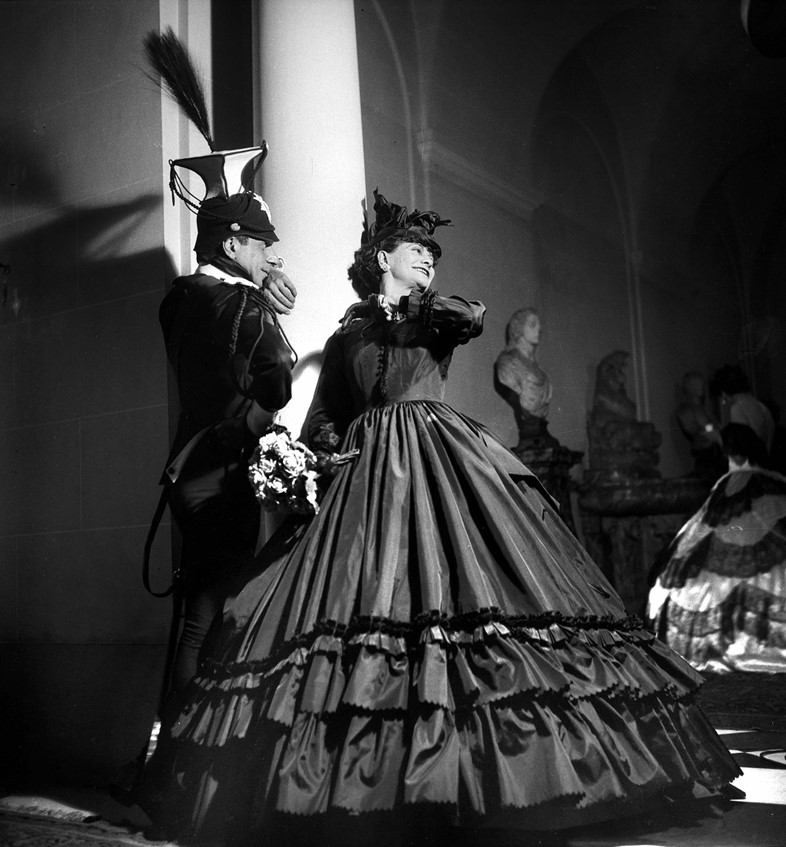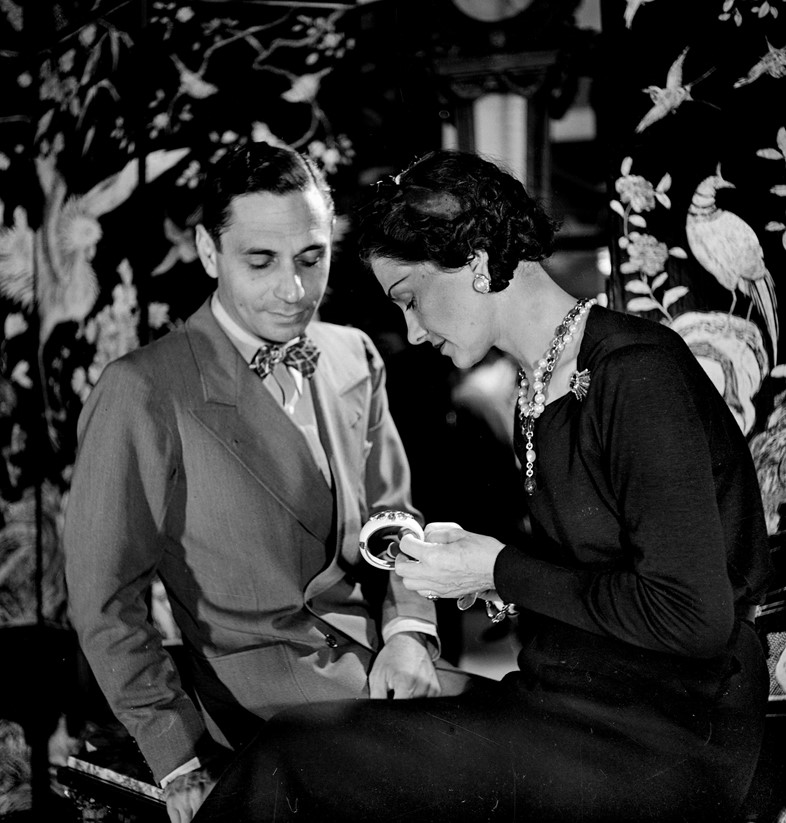She was Coco Chanel, a self-made businesswoman, he was a Sicilian playboy – together, they would create Chanel’s Maltese cross, a symbol of the house’s Modernism
It was a match made in heaven. When Gabriel ‘Coco’ Chanel met Fulco di Verdura, a Sicilian aristocrat with an imprudent attitude to life, he was a jet-setting playboy who was close to blowing his inherited fortune on lavish costume parties at the family seat in Palermo. She, on the other hand, was a self-made businesswoman and the fashion world’s Modernist darling, partial to a Duke or a few nonetheless.
Verdura, a future Duke himself, moved to Paris in 1927 and with the help of café society friends Cole and Linda Porter found work designing textiles for Chanel. He was less of an intern, though, and more of an aristocratic consultant, taking Chanel on trips to Venice and Ravenna and guiding her through ancient wonders and Byzantine treasures, leading to her enrolling him to help redesign her own treasury of fine jewellery.
By the late 1920s, Chanel was in her mid-forties and had amassed quite the collection of jewels. Many were from her various lovers, including Russian Grand Duke Dimitri and the Duke of Westminster, who was said to have sent her a jewel every week with a bouquet of flowers. Verdura began by helping redesign Chanel’s personal collection of jewels.
“I have known luxury on a scale that no one else will ever experience again,” she said of her time with the richest man in Britain. Her outlook, however, was not about money – and she despised vulgar displays of wealth. “A woman should mix fake and real,” was another one of her corkers. “The point of jewellery isn’t to make a woman look rich but to adorn her – not the same thing.”

From Chanel, Verdura was to learn that there was more to the art of jewellery than twinkling cascades of blue-white diamonds in austere platinum settings; that an antique ruby and emerald cross might be pinned on the lapel of a tweed suit to devastating effect; and that proportion was the secret of good design. It became clear that the pair had a lot in common: both despised the vulgarity of huge solitaires set in rings. “One might as well tie a cheque around one’s neck,” Chanel famously quipped; both shunned the meagre and the insignificant. They also shared a passion for Baroque and organic shapes and an unbridled freedom when it came to the choice of materials, as well as a mutual indifference to the classic criteria of taste, often combining sophistication and primitivism.
Much of their collaboration is undocumented, but what is certain is that for several years from 1933, he helped shape the jewellery of the house of Chanel. Perhaps most distinctive is the cuff bracelet in enamel and precious stones with a Maltese cross, a motif that was deeply rooted in Mediterranean culture of the young Sicilian, and which couldn’t have failed to evoke Chanel’s memories of a childhood spent in the walls of a convent punctuated by the symbol. Diana Vreeland quickly snapped up two of the Maltese cross brooches – aptly named ‘Theodora’ and ‘Ravenna’ — with tourmalines, peridots, citrines and topaz set in yellow gold.
Later, Chanel’s signature crosses would be emulated in rock crystals by Robert Goossens and coloured glass by Maison Gripoix — the organic surfaces arranged like a stained-glass window, capturing the spirituality of imperfection that Chanel remembered from the cobbled design of the nunnery she grew up in. And just as Byzantium pendant crosses served as markers of the wearer’s faith, Chanel’s pendant crosses and Maltese cuffs were highly sought after by clients who wore them with the belief in her particular philosophy of Modernism.
Heavenly Bodies: Fashion and the Catholic Imagination at the The Metropolitan Museum of Art, New York runs from May 10 – October 8, 2018.
